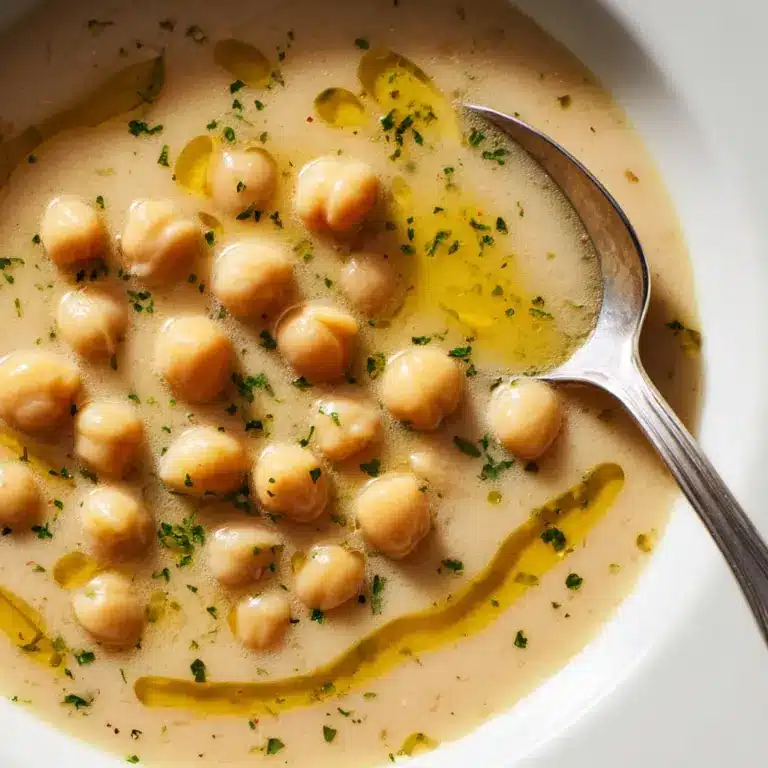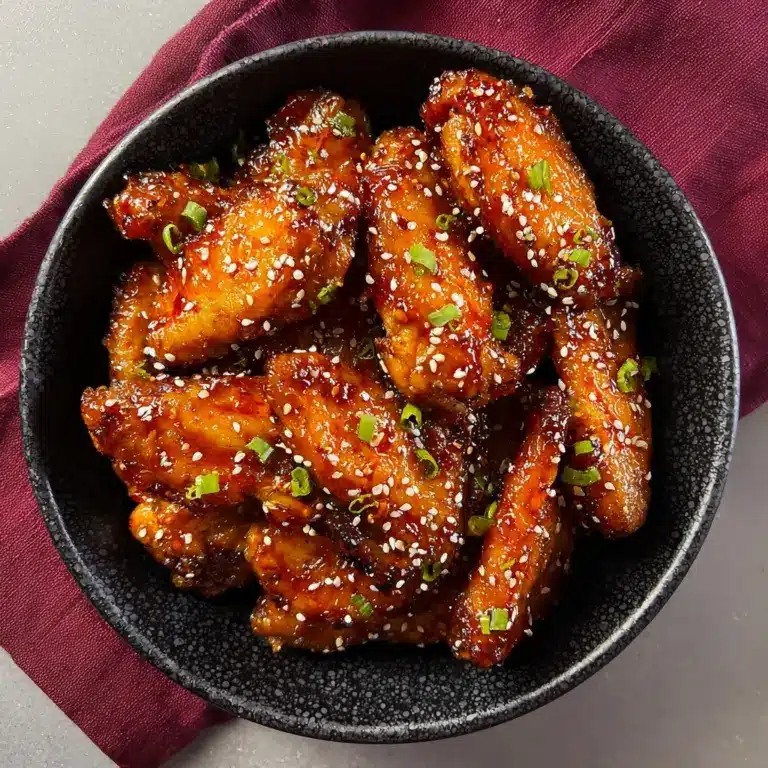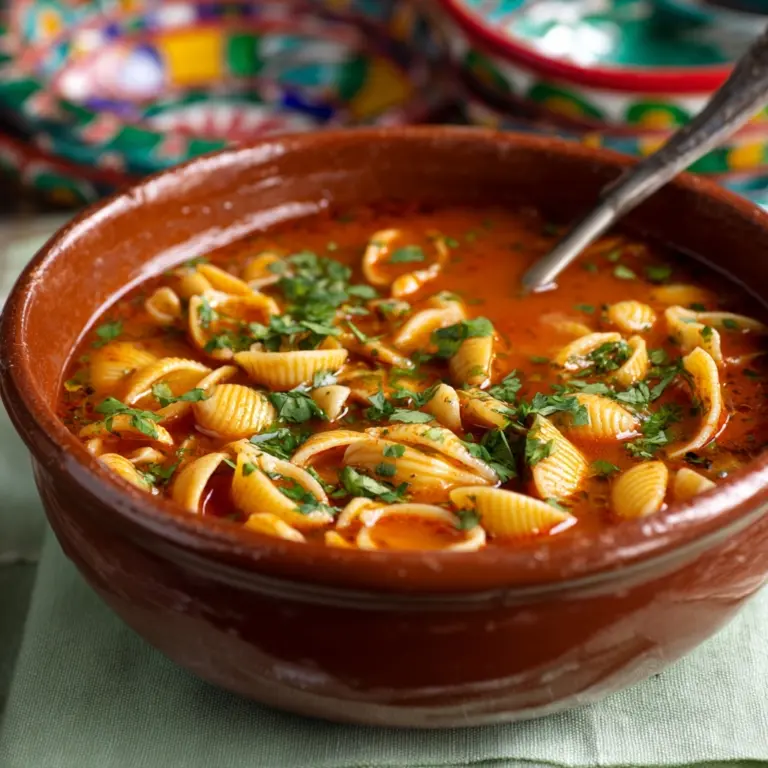Biang Biang Noodles Recipe
If you’ve been craving an unforgettable noodle experience, Biang Biang Noodles might just become your new favorite obsession. These hand-pulled “belt” noodles are famous for their width, chewy texture, fiery chili oil, and the intoxicating aroma that instantly fills the kitchen. Every slurp bursts with bold, complex flavors — a true celebration of texture and spice. Once you’ve tried Biang Biang Noodles, you’ll see why noodle lovers across the world are completely hooked.
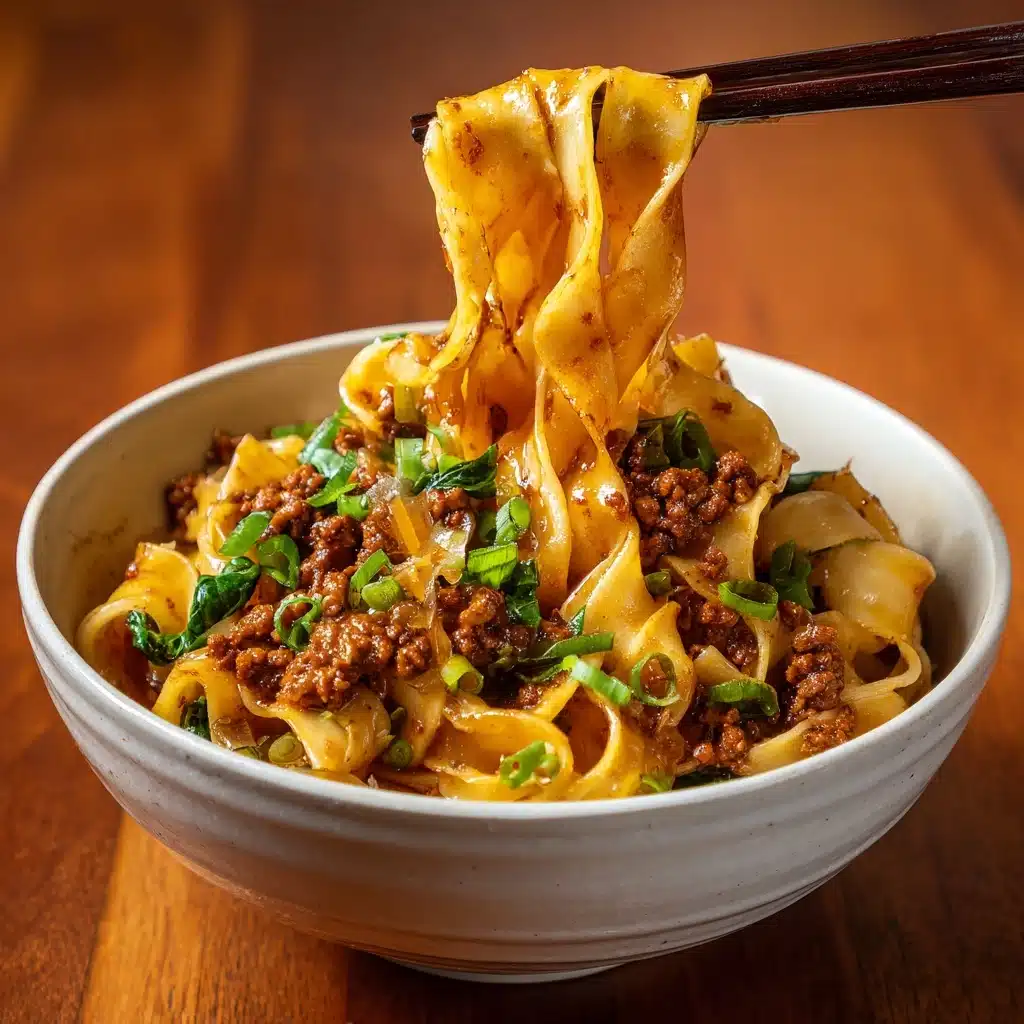
Ingredients You’ll Need
Making Biang Biang Noodles might look ambitious, but the ingredients list is beautifully straightforward. Every item is thoughtfully chosen for its role: from the silkiness of the flour dough to the tingle of chili oil, each element creates the signature taste and texture that make these noodles unforgettable.
- All-purpose flour: The backbone of the noodle, providing the chewy, springy bite that makes Biang Biang Noodles so satisfying.
- Water: The key to transforming flour into dough, giving the noodles their essential elasticity and mouthfeel.
- Salt: Just a pinch, but it makes a world of difference in enhancing the flavor of the noodle itself.
- Oil for greasing: Prevents sticking, which is vital for easy pulling and rolling of these wide noodles.
- Peanut oil: Lends a rich, nutty base to the chili oil sauce and carries the aromatics for vivid flavor.
- Soy sauce: Adds crucial umami depth, balancing out the heat of the chili oil.
- Chili flakes: Bring the fire, tingling your palate and coloring the whole dish a vibrant red.
- Vinegar: Cuts through the richness with a bright tang that makes every bite pop.
- Garlic: Delivers savory pungency, infusing the sauce with irresistible fragrance.
- Green shallots: Sprinkle in freshness and crunch, and look dazzling against the noodles.
- Cumin: A subtle spice that gives Biang Biang Noodles their signature earthy undertone.
- Toasted sesame seeds: Add a toasty crunch and nutty aroma, elevating the finishing touch.
- Pork mince (optional): For a meaty dimension — just as wonderful if you want a plant-based version and skip it.
- Noodle cooking water: A little starchy water helps the sauce cling perfectly to each noodle strand.
How to Make Biang Biang Noodles
Step 1: Prepare the Dough
Start by combining your flour, water, and salt in a big bowl. Mix until the dough becomes shaggy and loosely gathered. Now, it’s hands-on time — knead until the dough turns smooth and elastic, about 5 minutes with a dough hook or 8 to 10 by hand. Shape the dough into a fat, round ball, divide into eight pieces, and roll each into a cucumber-like log. Brush them with oil, cover, and let them rest at room temperature for three hours. This pause is critical and rewards you with dough that’s supple enough to stretch into gorgeously long Biang Biang Noodles.
Step 2: Make the Chili Oil Sauce
While your dough chills out, turn your attention to the soul of the dish: the chili oil sauce. Combine peanut oil, soy sauce, chili flakes, vinegar, garlic, green shallots, cumin, and sesame seeds in a small saucepan. Heat gently — you want to coax out all those aromas, not burn them! If you’re going all in with pork mince, sauté it now until thoroughly cooked. Keep the sauce warm so it’s ready for action when your noodles are done.
Step 3: Prepare the Noodles
Now, working on a lightly greased surface, roll each dough log into a flat sheet about 2.5 to 3 inches wide. Take your greased rolling pin and firmly press a dent down the center. This clever trick is your starting lane for stretching the dough into wide, signature ribbons.
Step 4: Pull the Noodles
Lightly oil your hands (trust me, you’ll thank me later for this tip). Gently tug and pull each piece of dough from that center depression, transforming it into a long, uneven ribbon just like the pros. Don’t panic if they look rustic — that’s part of the homemade charm! The more you practice, the longer and silkier your Biang Biang Noodles will become.
Step 5: Cook the Noodles
Bring a large pot of water to a rolling boil. Drop in the noodles right away after pulling, and cook for only about a minute or until they start bobbing on the surface. They’re ready when they’re glossy, floppy, and perfectly chewy. A quick transfer with a slotted spoon keeps their texture impeccable.
Step 6: Assemble and Serve
Lay your fresh noodles in a serving bowl, then pour the shimmering chili oil sauce over the top. Toss everything together to soak up all that flavor, making sure each ribbon is beautifully coated. Sprinkle with extra sesame seeds or chopped green onions for flair, and serve immediately while the noodles are delightfully warm — this is Biang Biang Noodles at its best.
How to Serve Biang Biang Noodles
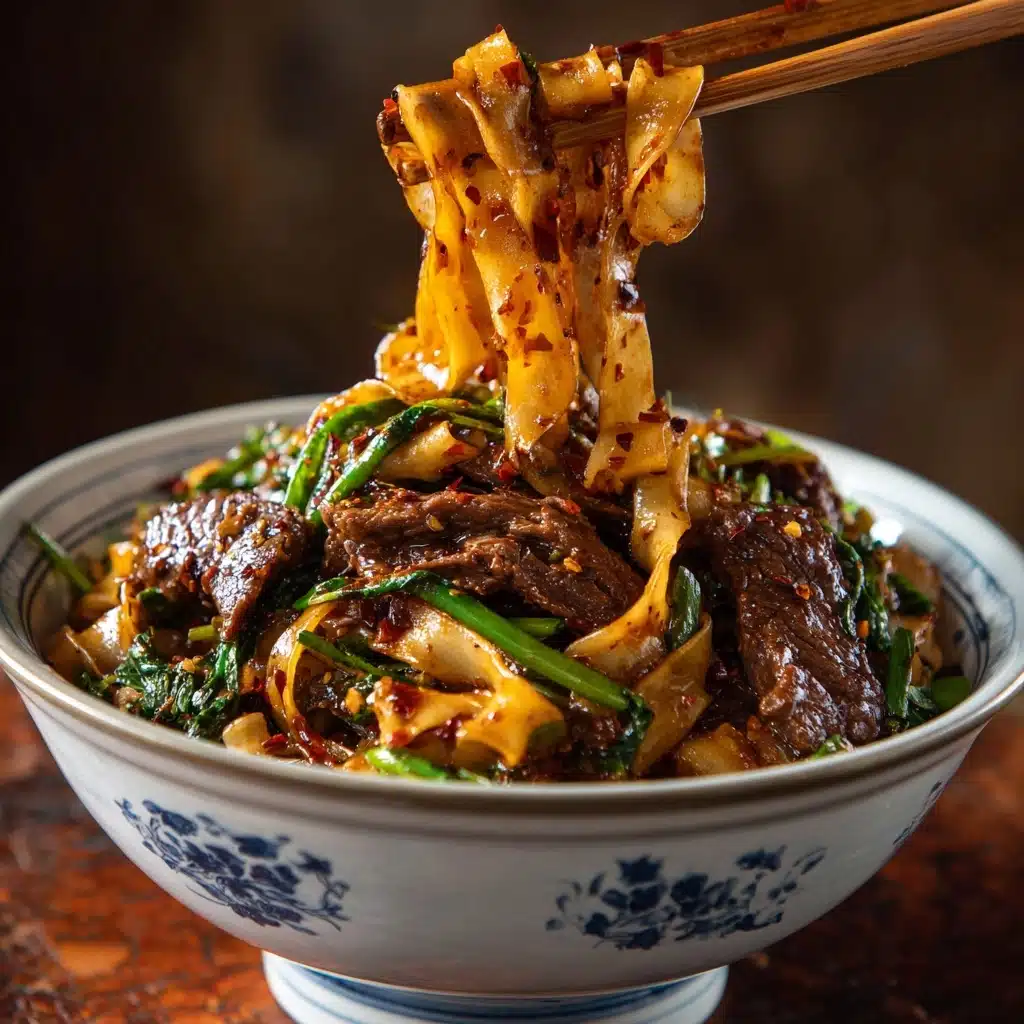
Garnishes
Nothing beats a generous sprinkle of toasted sesame seeds or a fistful of chopped green shallots on top of steaming Biang Biang Noodles. For extra drama, add fresh cilantro or a swirl of extra vinegar for brightness. The garnishes not only add color and texture but elevate the aroma, making the first bite utterly irresistible.
Side Dishes
Biang Biang Noodles shine alongside crisp, refreshing side dishes. Think: quick stir-fried greens, tangy cucumber salad, or crunchy pickled vegetables to offset the warmth of the noodles. If you want to go all out, serve with a platter of dumplings or pan-fried tofu for a real northwest Chinese feast.
Creative Ways to Present
For a showstopping table moment, serve Biang Biang Noodles family-style in a giant bowl, letting friends and family toss in their favorite toppings. Or, twist the noodles high with a pair of chopsticks for that ultimate noodle pull. Leftover chili oil sauce also makes a brilliant drizzling condiment for roasted veggies or grilled meats — get creative and let the flavors inspire you!
Make Ahead and Storage
Storing Leftovers
If you find yourself with extra Biang Biang Noodles (rare, but possible!) let them cool completely before storing in an airtight container. Keep the noodles and sauce separate if you can, as this will help maintain their lovely texture and prevent sogginess. Store in the refrigerator for up to 2 days for the best flavor and chew.
Freezing
You can absolutely freeze the pulled, uncooked noodles for future cravings. Dust them lightly with flour to prevent sticking, then freeze in portions in airtight bags. When you’re ready, boil straight from frozen, adding just an extra minute to the cooking time. The chili oil sauce, however, is best made fresh for maximum flavor.
Reheating
Noodles tend to gobble up sauce as they sit, so when reheating, splash in a bit of hot water or extra sauce to help loosen them up. Warm gently on the stovetop or microwave in short bursts, tossing halfway through. Aim for just heated through — overcooking can dull that signature Biang Biang Noodles bounce.
FAQs
Can I make Biang Biang Noodles without pork?
Absolutely! The noodles and sauce are deeply flavorful all on their own. For a vegetarian version, simply skip the pork mince, or add firm tofu or mushrooms for extra body and savoriness.
What if I don’t have peanut oil?
No problem — you can use another neutral oil like canola, sunflower, or vegetable oil. Just pick something with a high smoke point so the chili doesn’t burn and the aromatics infuse beautifully.
How do I keep the noodles from sticking together?
The trick is to oil both your hands and surface well when rolling and pulling the noodles. Once cooked, toss the noodles immediately with sauce or a little oil so they stay slippery and tangle-free.
Can I use a stand mixer for kneading the dough?
Yes, a stand mixer with a dough hook saves time and elbow grease. You’ll need about five minutes on medium speed for a smooth, stretchy dough — just finish it by hand if it still feels a bit rough.
Are Biang Biang Noodles really spicy?
They have a signature kick thanks to the chili oil, but you’re in full control of the heat! Start with less chili if you like it milder, or dial it up for full fiery flavor. Add extra chili flakes at the end if you’re feeling daring!
Final Thoughts
There’s truly nothing like the magic of homemade Biang Biang Noodles — dramatic to look at, joyful to eat, and bursting with vibrant flavor in every bite. Don’t be surprised if you crave these hand-pulled ribbons often! Roll up your sleeves, invite a friend or two, and get ready for the most fun (and delicious) noodle night you’ve ever had. Enjoy!
Print
Biang Biang Noodles Recipe
- Total Time: 3 hours 40 minutes
- Yield: 4 servings 1x
- Diet: Vegetarian
Description
Learn how to make authentic Biang Biang Noodles at home with this step-by-step recipe. These wide, hand-pulled noodles are drenched in a savory chili oil sauce, making for a delicious and satisfying meal.
Ingredients
For the Noodles:
- 375g (13oz) all-purpose flour
- 200ml (7floz) water
- ½ teaspoon salt
- Oil for greasing
For the Chili Oil Sauce:
- 200ml (7floz) peanut oil
- 4 tablespoons soy sauce
- 3 tablespoons chili flakes
- 1½ tablespoons vinegar
- 3 cloves garlic, finely diced
- 3 green shallots, finely chopped
- ½ teaspoon cumin
- 3 teaspoons toasted sesame seeds
- 100g (3.5oz) pork mince (optional)
- ½ cup noodle cooking water
Instructions
- Step 1: Prepare the Dough
In a large bowl, combine the flour, water, and salt. Mix until the dough becomes shaggy in texture. Knead the dough until smooth and elastic. Shape and rest the dough.
- Step 2: Make the Chili Oil Sauce
Combine ingredients in a saucepan, heat until aromatic. Cook pork mince if using. Set sauce aside.
- Step 3: Prepare the Noodles
Roll dough into sheets and create a depression for stretching.
- Step 4: Pull the Noodles
Stretch the dough into long, thin ribbons.
- Step 5: Cook the Noodles
Boil water, cook noodles briefly, then transfer to a bowl.
- Step 6: Assemble and Serve
Toss noodles with chili oil sauce, garnish, and serve hot.
Notes
- Rest the Dough: The longer the dough rests, the easier it will be to stretch.
- Oil Generously: Grease your surface, hands, and rolling pin to prevent sticking.
- Don’t Rush the Pull: Gentle, steady pulling yields long, even noodles.
- Use Fresh Ingredients: The quality of your chili flakes, garlic, and soy sauce significantly impacts the flavor of the sauce.
- Prep Time: 30 minutes
- Cook Time: 10 minutes
- Category: Main Course
- Method: Hand-Pulled Noodles
- Cuisine: Chinese
Nutrition
- Serving Size: 1 serving
- Calories: 520
- Sugar: 2g
- Sodium: 820mg
- Fat: 28g
- Saturated Fat: 5g
- Unsaturated Fat: 18g
- Trans Fat: 0g
- Carbohydrates: 56g
- Fiber: 3g
- Protein: 9g
- Cholesterol: 15mg
Keywords: Biang Biang Noodles, Hand-Pulled Noodles, Chinese Noodles, Chili Oil Sauce




